Angkor was the capital city of the great Khmer Empire, which flourished for 600 years from the 9th-15th centuries. It was the largest pre-industrial city in the world covering an area of 1000 square kilometres. Its closest rival is the Mayan city of Tikal in Guatemala but it is only about a tenth of the size of Angkor. Angkor is known as a “hydraulic city” due to its sophisticated and complex water management system of holding and dispersing water. However, it really should also be known as the city of temples as there are over 1000 temples located in the Angkor area. Although some may be just piles of rubble in the middle of a rice field, there are those that draw over 2 million visitors per year. We will start with the big daddy of them all – Angkor Wat.
Angkor Wat is the largest religious monument in the world and sometimes referred to as the 8th Wonder of the World. Originally constructed as a Hindu temple dedicated to Vishnu by Khmer King Suryavarman II, it was later converted to a Buddhist temple when a new king came into power. It is unique from the other temples as it’s a temple that was never completely abandoned and forgotten like many of the other temples. It is also protected from the encroachment of the jungle by the 620 feet wide moat surrounding it. It faces West with a sandstone causeway leading to the entrance. There are libraries on either side of the causeway. The main temple itself is built on a raised terrace with three sequentially higher galleries culminating in a central tower forming a quincunx. Even though Angkor Wat was never abandoned, it was neglected and looted. It has undergone restoration work on and off in the 19th and 20th centuries. The question now is how to protect it from the millions of tourists that walk and climb all over it every year. For now we were fortunate enough to be one of the ones walking and climbing all over it.
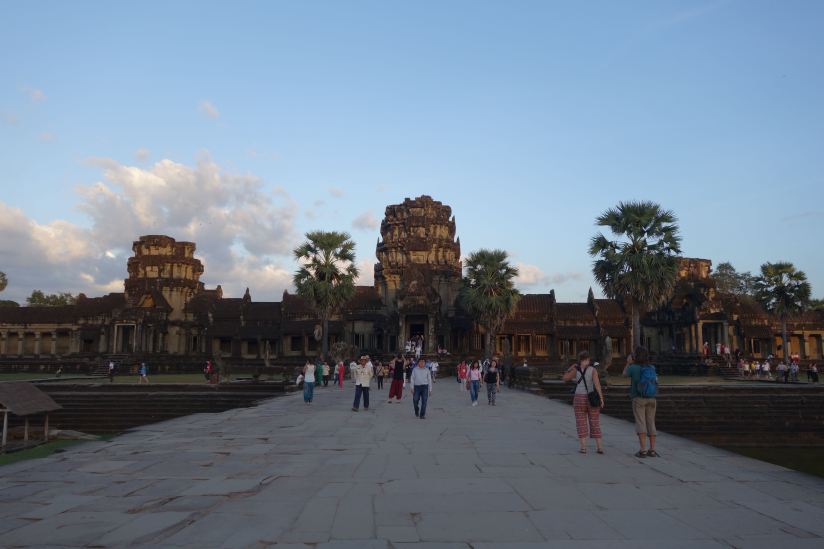
We actually visited Angkor Wat twice. Once briefly close to sunset after we purchased our temple pass. If you buy your temple pass at 5pm the day before you plan to visit, you can enter for free for the 30 minutes the temples are still open. The ticket booths selling the next day temple passes open at exactly 5pm. I recommend arriving at 4:45pm to wait in line. This photo was taken during this brief sunset visit. This is the sandstone causeway leading to the West entrance.
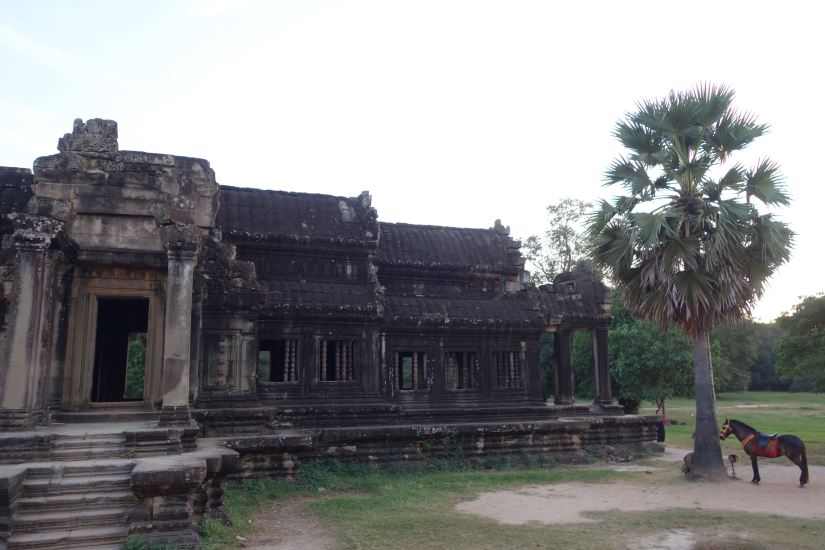
One of the libraries beside the causeway. Unsure who the horse belonged to but it completed the photo.
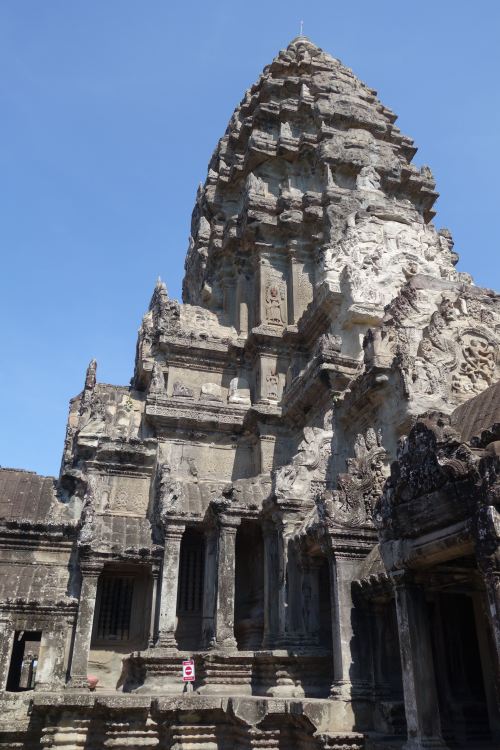
The central tower at Angkor Wat. In order to get up here you have to wait in line and make sure you are wearing clothes that cover your shoulders and pants/skirts that go pass your knees. Also, children are not allowed up here so leave them with your guide or take turns with friends or family members.
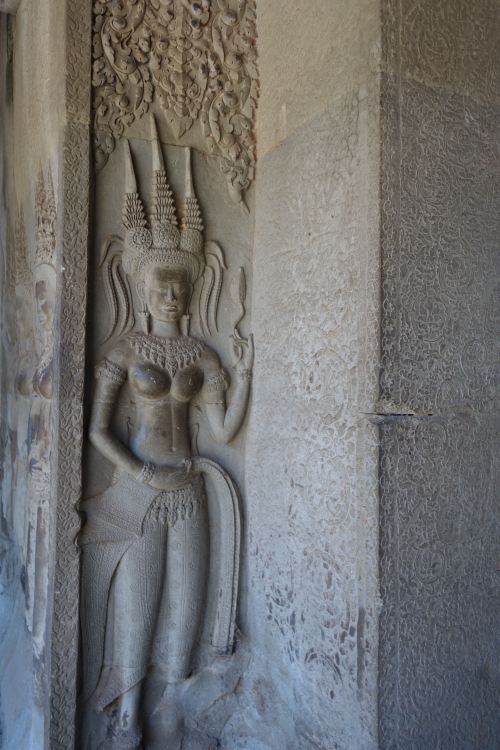
A devata (minor deity). This is different from the many depictions of apsara dancers on the walls of the temples.
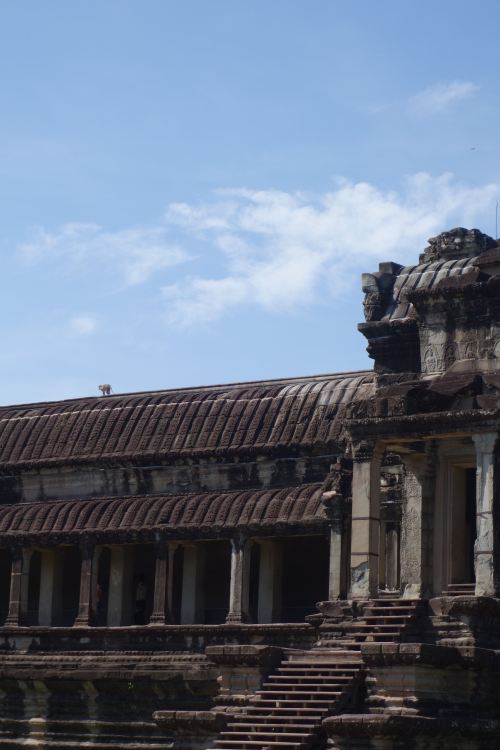
Outer wall of Angkor Wat. Notice the monkey walking along the ridge. There were several climbing all over the tops of the temple and many more along the side of the road being fed by people.
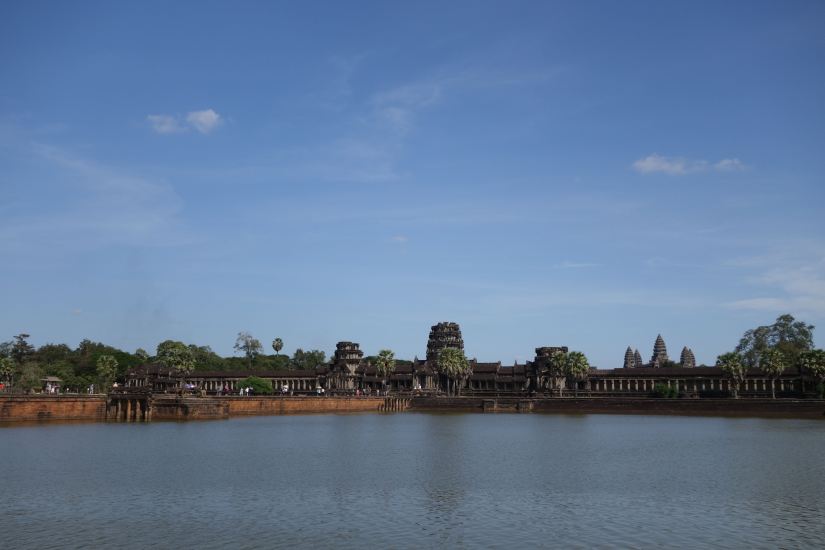
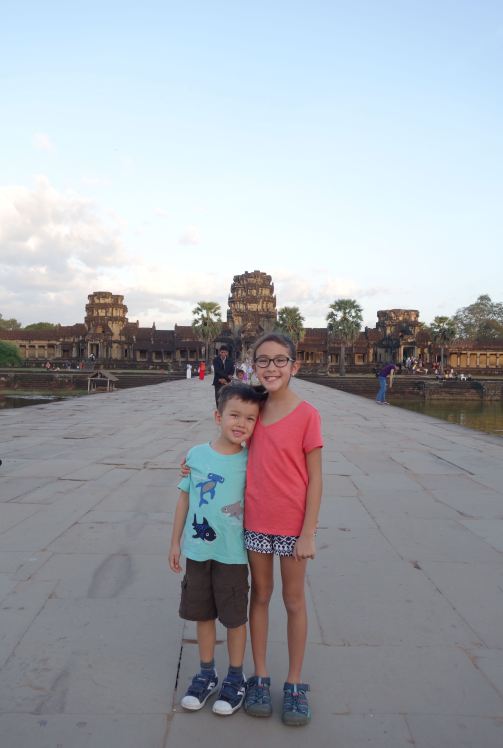
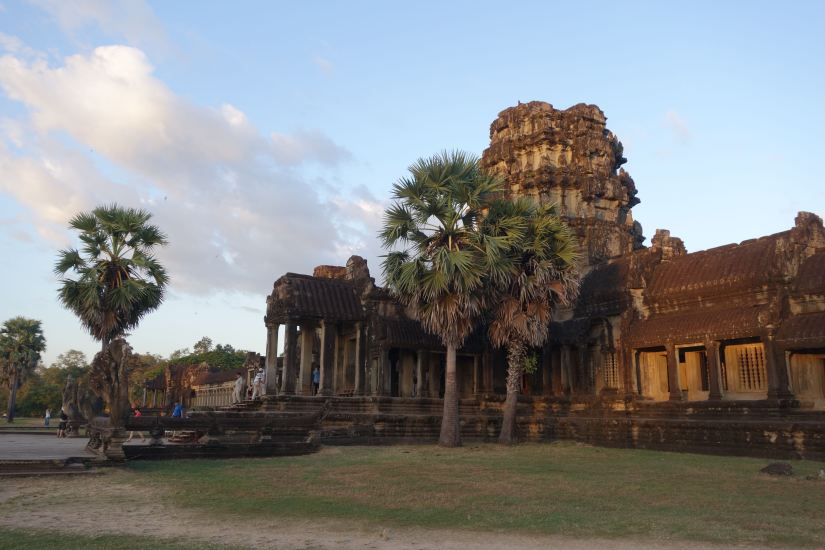
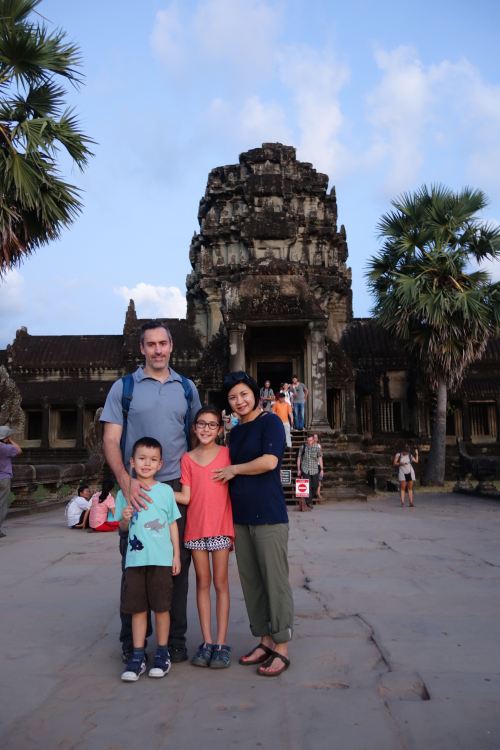
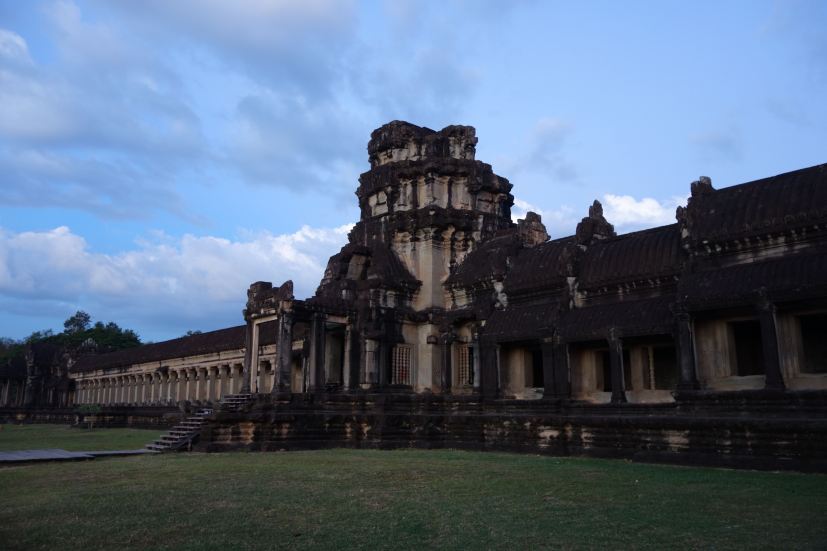
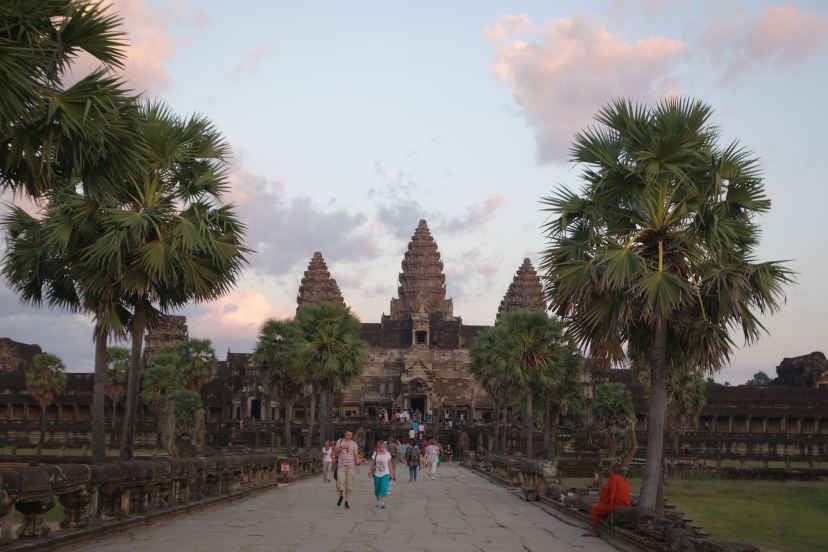
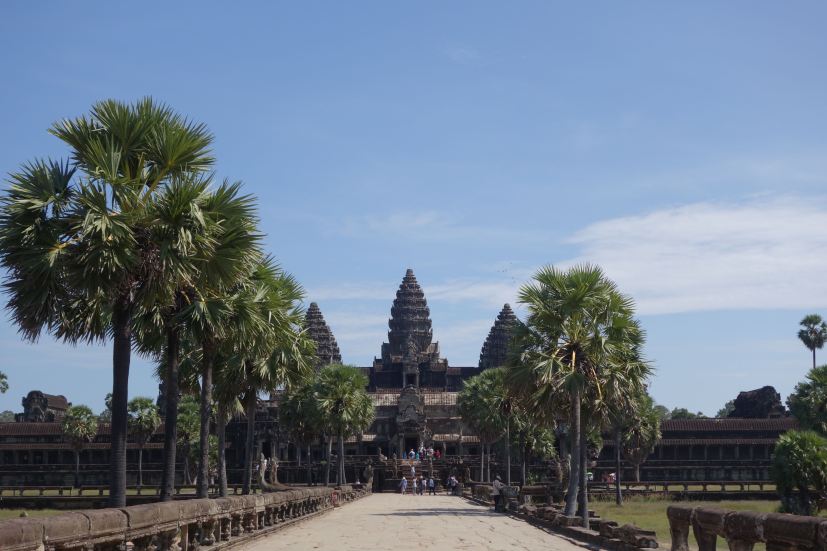
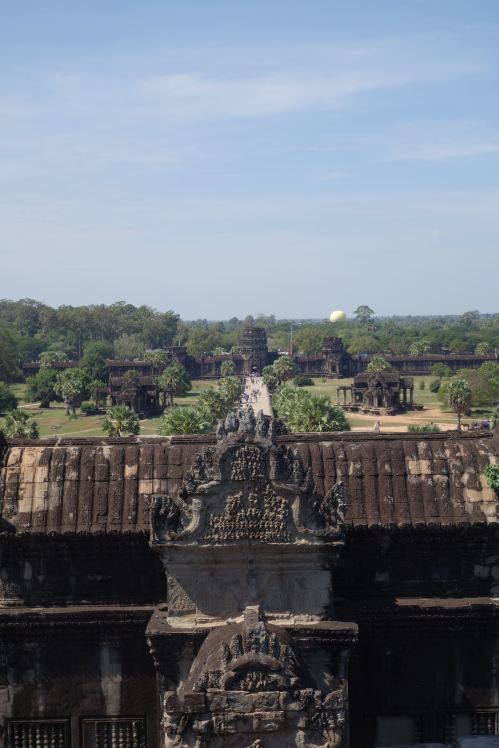
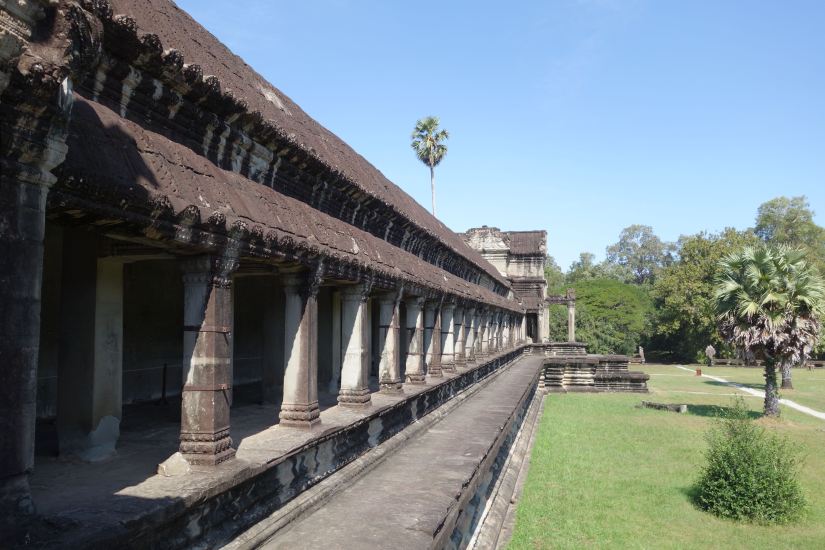
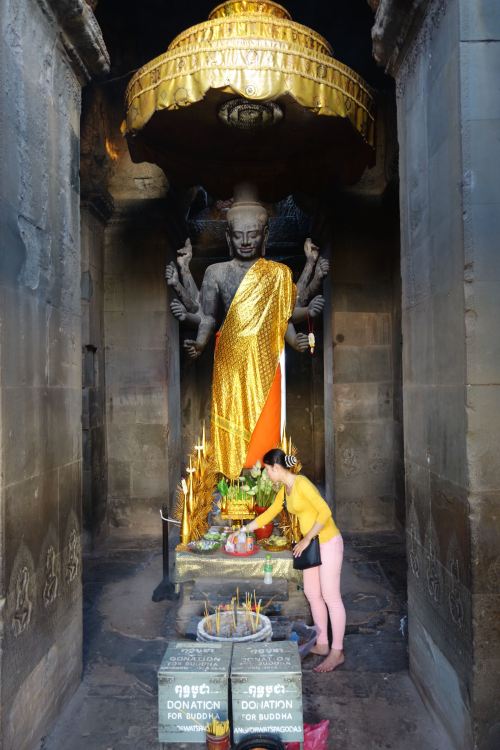
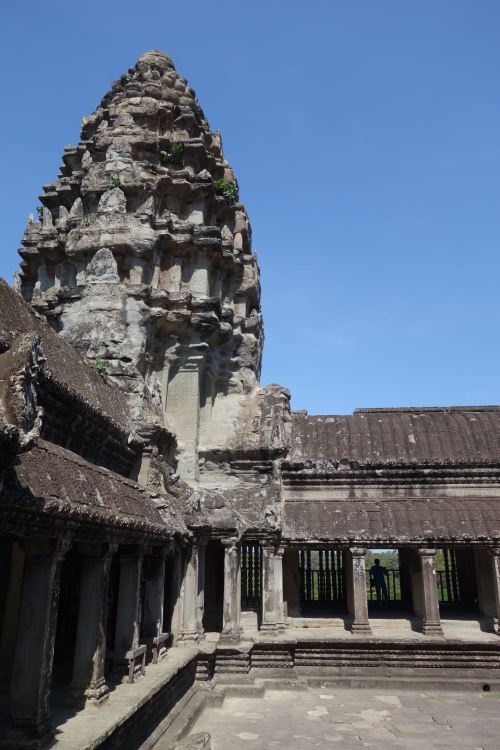
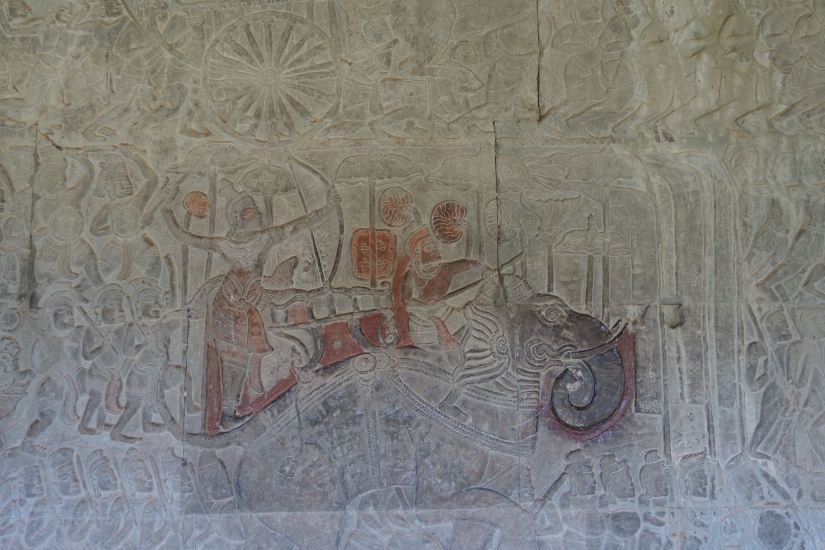
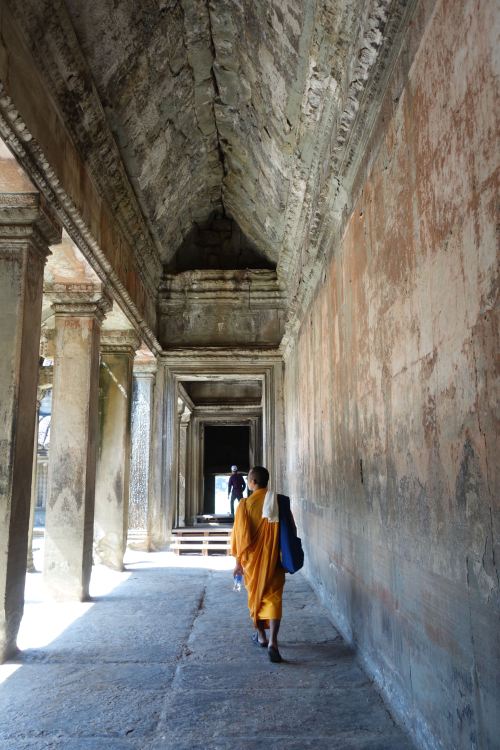
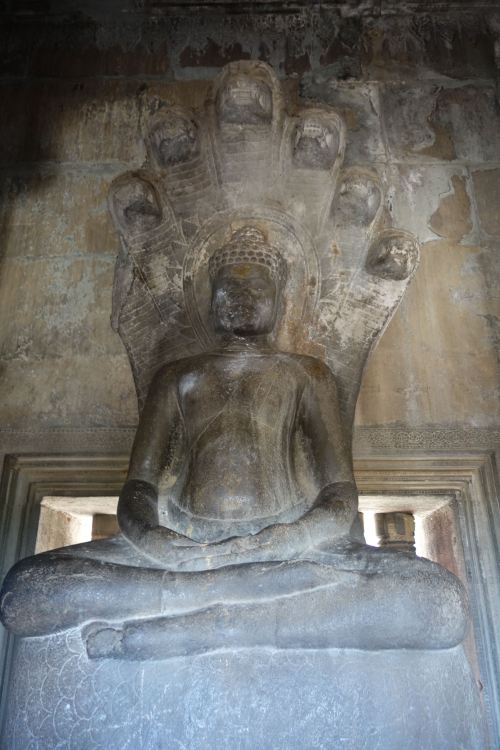
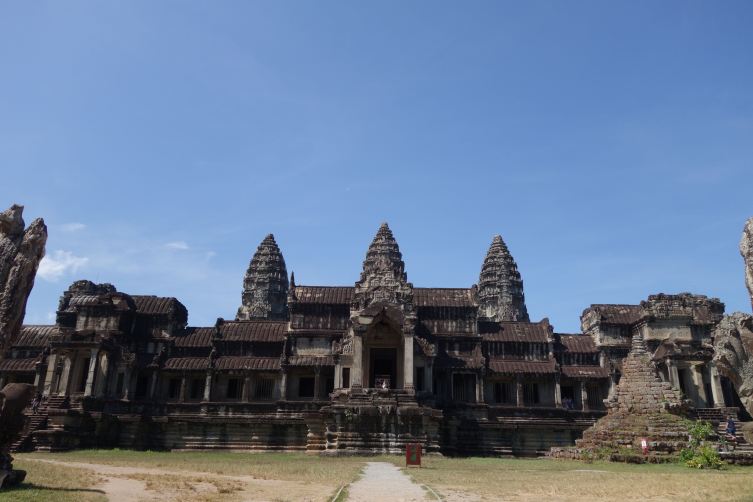
Absolutely stunning !
LikeLiked by 1 person
Thanks Sandy. It was amazing.
LikeLike